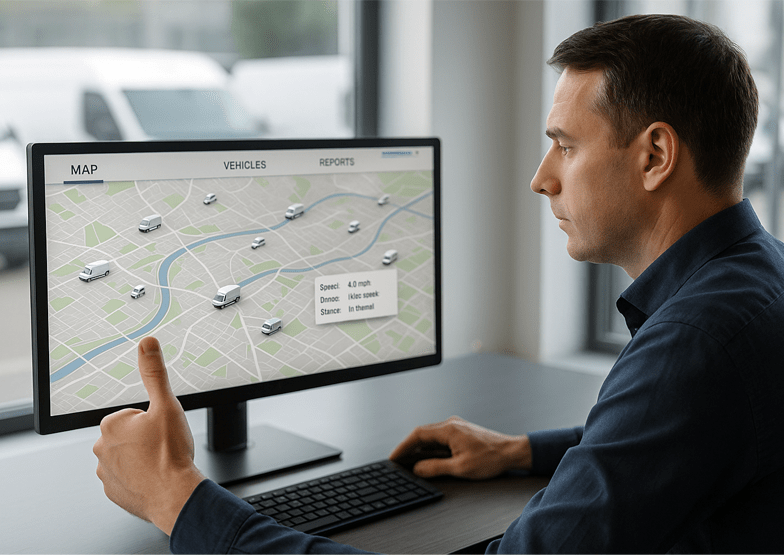
Abhay, a supervisor at a newly launched logistics company, was under pressure.
Customer complaints were piling up. Deliveries were late. Drivers went off-route. One client, after yet another delayed delivery, switched providers entirely. That moment hit hard.
“We were losing customer trust fast,” Abhay recalled. “I knew I needed to act before things got worse.”
A friend recommended AVLView, a GPS fleet tracking system that offered live location tracking, geofencing, and driver insights.
He took the leap.
Within weeks, Abhay started receiving route deviation alerts. He could track vehicles in real time, identify bottlenecks, and respond quickly. Delivery turnaround times dropped by 30%. More importantly, his team regained control—and his clients noticed.
This story isn’t unique. Fleet managers across logistics, construction, emergency services, and more are adopting live GPS tracking to gain visibility, cut costs, and boost performance.
Let’s explore how live vehicle GPS tracking works, why it matters, and how you can choose the right system for your fleet.
What Is Live Vehicle GPS Tracking?
In simple terms, live GPS tracking is real-time monitoring of a vehicle’s movement. But it’s much more than just watching a dot on a map.
With modern tracking systems, you can monitor: – Vehicle location, speed, and direction – Ignition status and idling – Sudden acceleration or harsh braking – Fuel levels and efficiency.
When combined with telematics, this data gives you the power to: – Reduce fuel waste – Improve driver behaviour – Minimise maintenance costs – Keep customers informed.
The GPS Vehicle Tracker: Small Device, Big Impact
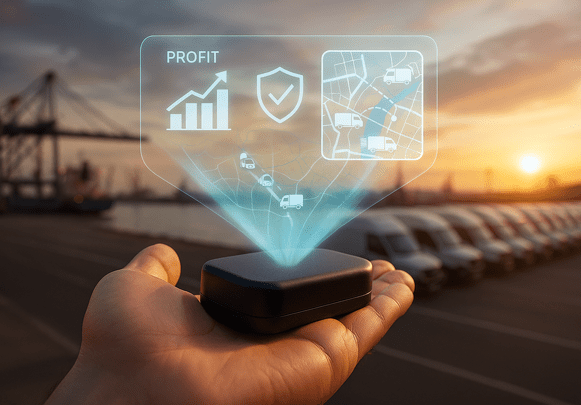
A GPS tracker is a compact device installed in each vehicle. It uses satellite technology to send real-time location and diagnostic data to a central platform.
But these trackers go far beyond location. They offer: –
Route history: So you can review trips or verify stops
Driving behavior metrics: Know who’s accelerating too fast or braking too hard
Fuel monitoring: Spot patterns of overuse or theft
Live alerts: Be notified instantly if something’s off
This isn’t passive tracking—it’s proactive control.
From Tracking to Telematics: The Next Level
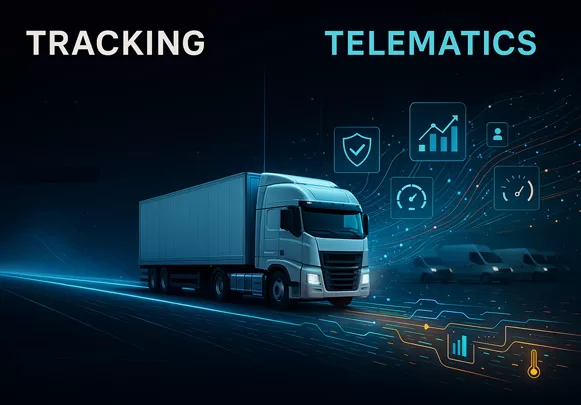
Telematics combines GPS tracking with telecommunications and onboard diagnostics. It adds intelligence to raw data and turns it into insights.
With telematics, you can: – Set up geofences and receive alerts when vehicles enter/exit zones – Get notified if a vehicle is towed or idles for too long – Automate reports for compliance, fuel usage, or fleet utilization – Schedule preventative maintenance based on real metrics
Telematics makes GPS tracking smarter, faster, and more valuable.
Why Real-Time GPS Tracking Is a Game-Changer
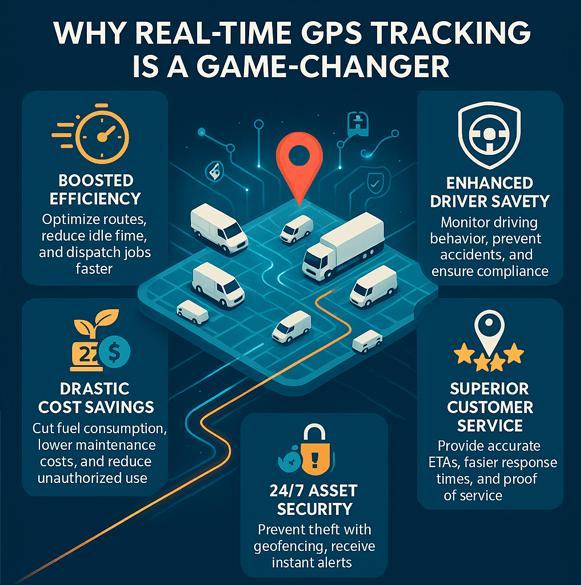
When used right, live tracking offers benefits that impact your bottom line and customer loyalty:
1. Total Transparency
Live updates mean accurate ETAs. Customers don’t like guessing—real-time visibility builds trust.
2. Reduced Operational Costs
Fuel is one of your biggest expenses. Track route deviations, idling, and speeding to reduce fuel usage by up to 20%.
3. Improved Driver Accountability
When drivers know their habits are being monitored, behavior changes. Fewer incidents, lower insurance premiums, and safer roads.
4. Faster Response to Issues
Accidents, breakdowns, or delays? With live data, you can reroute vehicles or dispatch assistance in seconds.
Who Benefits Most from Live GPS Tracking?
Nearly every industry that relies on vehicles. Here are a few standouts:
Logistics Companies
Track consignments in real time, reroute vehicles to avoid traffic, and reduce missed deadlines.
Taxi & Rental Services
Reduce wait times, assign drivers efficiently, and protect assets from misuse.
Construction Fleets
Monitor equipment across vast job sites, track usage, and deter fuel theft.
Emergency Services
Guide ambulances and first responders to incidents using the closest available unit. Every minute matters.
Why Fleet Visibility Isn’t Optional Anymore
Today’s customers expect Amazon-level tracking—even from B2B companies.
Fleet visibility isn’t just a nice-to-have. It helps: – Retain customers through reliable service – Control costs with better route and fuel management – Stay compliant with safety and labour regulations
In an era of razor-thin margins, real-time GPS tracking can be the edge that keeps you competitive.
Choosing the Right GPS Fleet Tracking System
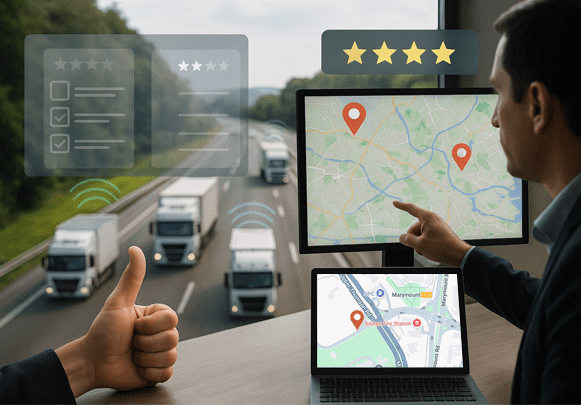
With so many systems out there, what should you look for?
Here’s a simple checklist: – Tracking accuracy & update interval (preferably every 10–30 seconds) – Quality & durability of the GPS device – Telematics & reporting capabilities – Cloud backups and data retention – Responsive support & onboarding help
And of course, make sure the software is intuitive for your team to use.
Ready to Regain Control of Your Fleet?
Whether you manage five vehicles or fifty, a live GPS tracking system can change how you operate.
Abhay did it—and saw results in weeks. You can too.
AVLView brings together real-time tracking, actionable telematics, and automation tools in one powerful platform.
Sign up with us today and take back control.
Your fleet. Your rules. Live.